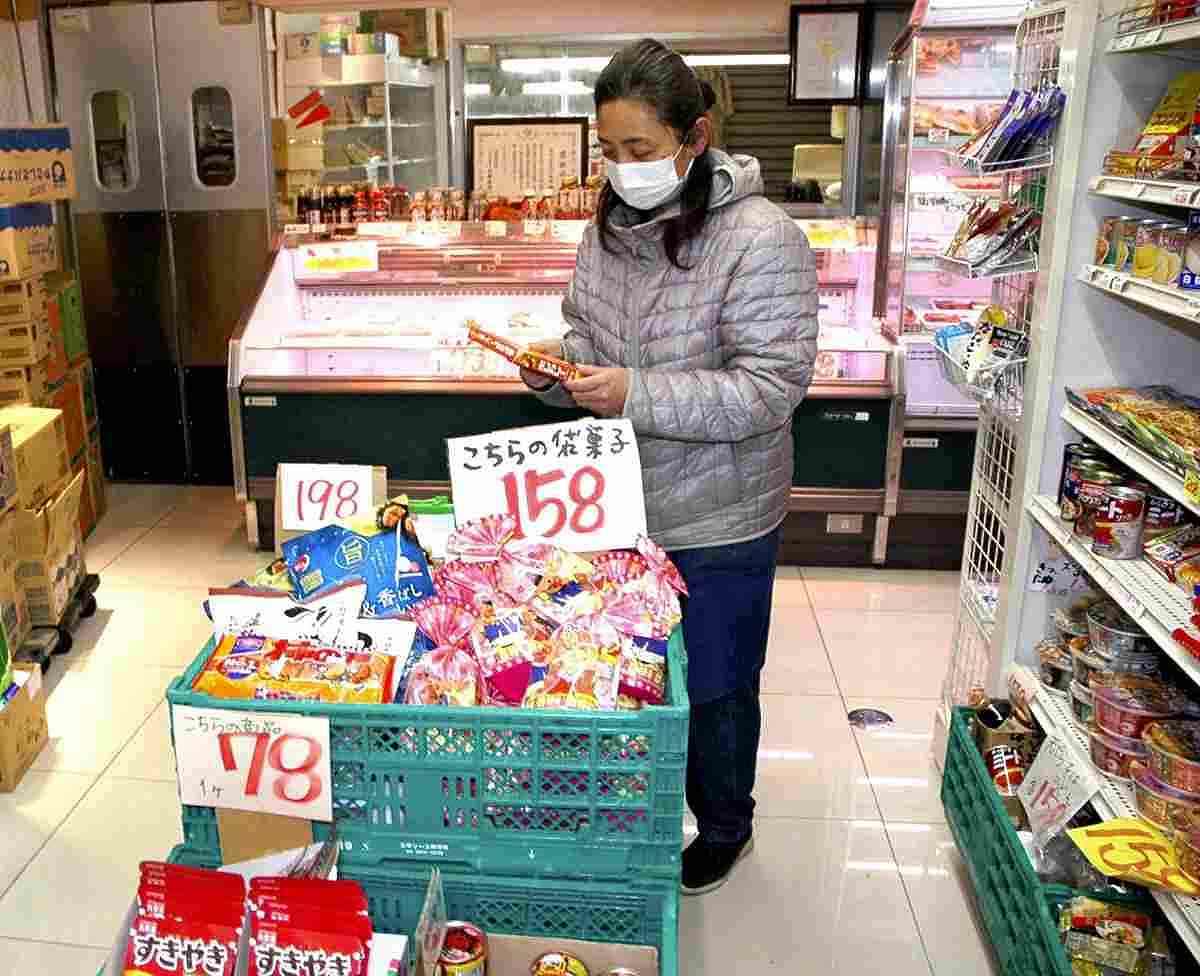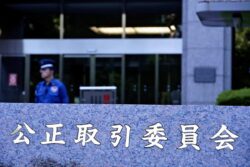
A shopper checks goods at a supermarket in Ota Ward, Tokyo, in February.
15:31 JST, March 20, 2023
The government has decided to use over ¥2 trillion from the fiscal 2022 reserve fund for measures to tackle high prices, according to government sources.
The plan’s central pillar is to add ¥1.2 trillion to the extant temporary subsidies for regional development, allowing local governments to establish flexible measures tailored to regional conditions.
The decision will be finalized Wednesday at the earliest at a meeting of the headquarters for comprehensive measures on prices, wages and livelihoods, chaired by Prime Minister Fumio Kishida, the sources said.
Some ¥700 billion of the ¥1.2 trillion earmarked for regional development is expected to be added to a framework set up in September to tackle high prices. While local governments can use the money to formulate their own measures, the central government will recommend specific projects such as liquefied petroleum gas (LPG), reducing the burden of special high-voltage electricity for factories, and supporting dairy farmers hit by rising feed prices.

A bill for electricity and gas with the government’s subsidies applied
The government introduced subsidies for electricity and natural gas starting from the January’s use. However, this does not cover LPG mainly used in rural area, leading to growing calls within the ruling parties for LPG to be newly included.
The subsidies can also continue to be applied to projects already recommended by the government, such as measures for public transportation and tourism-related businesses, as well as subsidies for school lunches.
The remaining ¥500 billion of the ¥1.2 trillion will be used to support low-income households, such as those exempt from resident tax, with the government planning to provide ¥30,000 to each family. Local governments will likely be allowed to expand the eligible-household criteria, reducing the subsidy to below ¥30,000.
Apart from this, the government will provide low-income, child-rearing households with ¥50,000 for each child and substantially increase grants to municipalities to support hospitals that secure beds for COVID-19 patients. The government also will continue holding down the price of wheat that it imports and sells since wheat is affected by overall high prices. A total of about ¥1 trillion is expected to be allocated for these measures.
Measures to tackle high prices is the government’s top priority in the run-up to unified local elections in April, and the scale of the measures may be further expanded.
"Politics" POPULAR ARTICLE
-

Japan to Support Central Asian Logistics Route That Bypasses Russia, Plan to Be Part of Upcoming Summit in Tokyo
-

Japan to Tighten Screening of Foreigners’ Residential Status by Providing Information of Nonpayment of Taxes
-

Chinese, Russian Bombers Flew Unusual Path by Heading Toward Tokyo; Move Likely Meant to Intimidate Japan
-

Japan Plans National Database to Track Foreign Ownership of Real Estate, Land as It Weighs New Rules
-

Up to 199,000 Deaths Estimated From Mega-Tsunami; Most Recent Occurrence Took Place in 17th Century
JN ACCESS RANKING
-

Tokyo Economic Security Forum to Hold Inaugural Meeting Amid Tense Global Environment
-

Keidanren Chairman Yoshinobu Tsutsui Visits Kashiwazaki-Kariwa Nuclear Power Plant; Inspects New Emergency Safety System
-

Imports of Rare Earths from China Facing Delays, May Be Caused by Deterioration of Japan-China Relations
-

University of Tokyo Professor Discusses Japanese Economic Security in Interview Ahead of Forum
-

Japan Pulls out of Vietnam Nuclear Project, Complicating Hanoi’s Power Plans



-250x167.jpg)






















